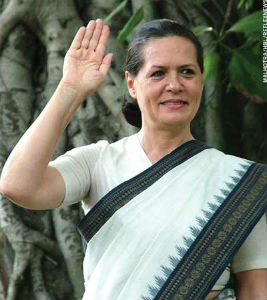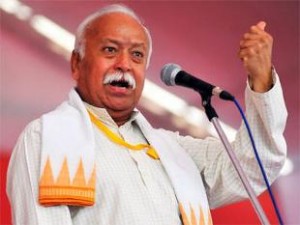Interfaith Gathering Highlights Hindu-Jewish Relationship

“Lead us from the unreal to the Real; Lead us from darkness to Light; Lead us from death to Immortality,” the audience repeated after the speaker. Though they were there to memorialize the Holocaust, their words did not come from the Torah, nor are they found in Christian Bible or the Quran.
The prayer came from the Brahadaranyakopanisad, one of the Upanishads, a series of ancient philosophical works central to Hinduism.
“It’s one of the most sacred texts in Hinduism,” explained Rajan Zed, who led the University of Nevada-Reno’s Holocaust Remembrance Day audience in a recitation of the scripture. Zed, the president of the Universal Society of Hinduism, participated in the event along with Jewish, Buddhist and Christian clergy. “I chose the text as a way to honor those people who had died and suffered, whose lives were changed forever.”
The major differences between Hinduism and Judaism—two religions with divergent views about theism and sacred images—have come to overshadow the many similarities between the two religions and their accompanying cultures, wrote Barbara Holdrege, a professor of Religious Studies at the University of California, Santa Barbara. Holdrege also authored “Veda and Torah,” in which she notes that both religions are comprised of many sects, have priesthoods, notions of purity and impurity and vast legal codes.
Zed added that Hinduism and Judaism both emphasize family institutions, have dietary laws and designate sacred languages for prayer. These similarities have allowed India’s Jewish community to live in harmony with India’s Hindu community for nearly 2,000 years.
According to Nissim Reuben, program director for Indian-Jewish American relations at the American Jewish Committee’s Asia Pacific Institute, Hindu and Jewish communities in America share mutual successes in academia, business and culture—in addition to religious similarities—which have drawn them closer.
“The Hindu community, particularly Hindus from India or of Indian origin, sees themselves as the new Jews,” Reuben said. “Both Jews and Hindus are dedicated, loyal, and focus on family and education. Indian-American Hindus have the same attachment to their motherland, India, as Jews do to Israel.”
With a strong and well-respected voice in the American life, the Jewish community serves as a model minority group for American Hindus, said Jay Kansara, the associate director of the Hindu American Foundation.
“The Hindu community finds a role model for advocacy, political activism—small in numbers but large in impact,” he said. “As a community in small numbers we would like to voice our opinion and exert strength like the Jewish community.”
Relations between the Hindu and Jewish communities have taken off internationally since 2007, when representatives from the AJC, the Hindu American Foundation, Israel’s chief rabbi and Indian Hindu leaders met in New Delhi for a summit organized by the World Council of Religious Leaders. The conference was aimed at eliminating confusion about the beliefs of the two religions. The original summit was followed by two more in 2008 in Jerusalem and a third in 2011 again in New Delhi.
The increase in relations between the Hindu and Jewish communities has been a boon for commercial ties between Israel and India. In an interview with the Hindustan Times in 2012, Israeli ambassador to India Alon Ushpiz said trade between the two countries had vaulted from $180 million in 1992, the year the two countries officially normalized relations, to about $5 billion in 2011. Reuben said Israel is now India’s second largest supplier of arms. He is working on ways to drum up more business between the two countries.
As partnerships between the two faiths have steadily increased, there has been a surge of interest in interfaith efforts on the grassroots level. Steve Brody was inspired to organize a Hindu-Jewish interfaith event at Adat Shalom synagogue in Bethesda, Md., after speaking with a Hindu friend he knew from the space industry.

The event, titled “A Jewish Hindu Evening of Exploration!” featured a slideshow of images from space accompanied by readings from the Torah and the Bhagavad Gita, one of Hinduism’s holy scriptures. The reading was followed by a dialogue between Adat Shalom’s Rabbi Sidney Schwarz and Anuttama Das, a religious leader at the Hare Krishna temple in Potomac, Md. The evening was capped off with a performance by Hinjew, a band fronted by Brody’s son along with students from the University of Virginia that specializes in traditional Indian music.
“The community warmly embraced the idea and had a healthy dose of curiosity,” Brody said. “I was really impressed with openness and kindness of [the] Hindu faith. It was a great experience for me. It was personally rewarding and I was very pleased and humbled by the comments about the value it provided to both Jewish and Hindu participants.”
A few miles away from the congregation at the Indian Embassy, Reuben and the AJC have collaborated with the Indian embassy for an annual Chanukah party every year since 2002. Reuben, an Indian Jew originally from Ahmedabad, India, said in an email that the party grew out of a conversation his father, Benjamin Reuben, had at a 2002 dinner party with India’s then ambassador to the United States Lalit Mansingh. The elder Reuben suggested that a Chanukah party would be a great way to highlight India’s vibrant Jewish heritage. Each year at the event Nissim Reuben recites Chanukah prayers Indian Jewry use in their Chanukah celebrations.
Zed has been collaborating with Jewish leaders in Nevada for years. Daniel Sanchez, a student at the University of Nevada and president of the Interfaith Student Club, said Zed’s participation in the event brought another perspective to the ceremony and more importantly, continued to break down barriers between the two communities. “It reduces the amount of space,” he said.

 हिन्दू संकुचित शब्द नहीं है| पाश्च्चात्य संस्कृति से प्रभावित व्यक्ति, विश्व के अन्य संप्रदायों से तुलना कर हिन्दू को भी संप्रदाय मानते है| यह उनकी बहुत बड़ी भूल है। क्योंकि हिन्दू तो एक बड़ा मंच है जिस पर कई संप्रदाय खड़े हैं, ऐसा प्रतिपादन राष्ट्रीय स्वयंसेवक संघ के सह सरकार्यवाह डॉ. कृष्ण गोपाल ने किया| स्वामी विवेकानन्द सार्द्धशति समारोह समिति, उदयपुर द्वारा 27 अप्रैल, 2013 को सामाजिक सद्भावना बैठक का आयोजन किया गया। इस बैठक में डॉ. कृष्ण गोपाल मुख्य वक्ता के रूप में उपस्थित थे|
हिन्दू संकुचित शब्द नहीं है| पाश्च्चात्य संस्कृति से प्रभावित व्यक्ति, विश्व के अन्य संप्रदायों से तुलना कर हिन्दू को भी संप्रदाय मानते है| यह उनकी बहुत बड़ी भूल है। क्योंकि हिन्दू तो एक बड़ा मंच है जिस पर कई संप्रदाय खड़े हैं, ऐसा प्रतिपादन राष्ट्रीय स्वयंसेवक संघ के सह सरकार्यवाह डॉ. कृष्ण गोपाल ने किया| स्वामी विवेकानन्द सार्द्धशति समारोह समिति, उदयपुर द्वारा 27 अप्रैल, 2013 को सामाजिक सद्भावना बैठक का आयोजन किया गया। इस बैठक में डॉ. कृष्ण गोपाल मुख्य वक्ता के रूप में उपस्थित थे|  Kochi April 7: In a much awaited moment which inspired thousands of Malayalee Sangh well wishers of Kerala and abroad, RSS Sarasanghachalak Mohan Bhagwat inaugurated Bhaskara Rao Bhavan at Kochi on Sunday morning. The new building was newly named ‘BHASKAREEYAM’, the Bhaskara Rao Memorial Mandir, after first RSS pranth pracharak of Kerala Sri Bhaskara Rao.
Kochi April 7: In a much awaited moment which inspired thousands of Malayalee Sangh well wishers of Kerala and abroad, RSS Sarasanghachalak Mohan Bhagwat inaugurated Bhaskara Rao Bhavan at Kochi on Sunday morning. The new building was newly named ‘BHASKAREEYAM’, the Bhaskara Rao Memorial Mandir, after first RSS pranth pracharak of Kerala Sri Bhaskara Rao.














 Gudiyattam, April 23: Prathama Varsha Sangha Shiksha Vargha of Uttar Tamil Nadu unit of Rashtriya Swayamsevak Sangh (RSS) was inaugurated by lighting the traditional lamp by his Holiness 'Mahadevamalai Vibhuti Sitthar' and offering floral tributes to Bharata Mata by Yuvaraj, the leading trader of Gudiyattam.
Gudiyattam, April 23: Prathama Varsha Sangha Shiksha Vargha of Uttar Tamil Nadu unit of Rashtriya Swayamsevak Sangh (RSS) was inaugurated by lighting the traditional lamp by his Holiness 'Mahadevamalai Vibhuti Sitthar' and offering floral tributes to Bharata Mata by Yuvaraj, the leading trader of Gudiyattam. 

 “Lead us from the unreal to the Real; Lead us from darkness to Light; Lead us from death to Immortality,” the audience repeated after the speaker. Though they were there to memorialize the Holocaust, their words did not come from the Torah, nor are they found in Christian Bible or the Quran.
“Lead us from the unreal to the Real; Lead us from darkness to Light; Lead us from death to Immortality,” the audience repeated after the speaker. Though they were there to memorialize the Holocaust, their words did not come from the Torah, nor are they found in Christian Bible or the Quran. The event, titled “A Jewish Hindu Evening of Exploration!” featured a slideshow of images from space accompanied by readings from the Torah and the Bhagavad Gita, one of Hinduism’s holy scriptures. The reading was followed by a dialogue between Adat Shalom’s Rabbi Sidney Schwarz and Anuttama Das, a religious leader at the Hare Krishna temple in Potomac, Md. The evening was capped off with a performance by Hinjew, a band fronted by Brody’s son along with students from the University of Virginia that specializes in traditional Indian music.
The event, titled “A Jewish Hindu Evening of Exploration!” featured a slideshow of images from space accompanied by readings from the Torah and the Bhagavad Gita, one of Hinduism’s holy scriptures. The reading was followed by a dialogue between Adat Shalom’s Rabbi Sidney Schwarz and Anuttama Das, a religious leader at the Hare Krishna temple in Potomac, Md. The evening was capped off with a performance by Hinjew, a band fronted by Brody’s son along with students from the University of Virginia that specializes in traditional Indian music.
 Rediffmail.com: September 1999: Former finance minister Manmohan Singh, Congress candidate for the Lok Sabha from South Delhi, today accused the Rashtriya Swayamsevak Sangh, ideological parent of the Bharatiya Janata Party, of being involved in the 1984 anti Sikh carnage in the capital.
Rediffmail.com: September 1999: Former finance minister Manmohan Singh, Congress candidate for the Lok Sabha from South Delhi, today accused the Rashtriya Swayamsevak Sangh, ideological parent of the Bharatiya Janata Party, of being involved in the 1984 anti Sikh carnage in the capital. New Delhi: April 11: A Delhi court today fixed April 23 for giving its order on whether to summon Home Minister Sushilkumar Shinde in a defamation case filed against him for his remarks linking BJP and RSS to Hindu terror.
New Delhi: April 11: A Delhi court today fixed April 23 for giving its order on whether to summon Home Minister Sushilkumar Shinde in a defamation case filed against him for his remarks linking BJP and RSS to Hindu terror.
 Chennai: April 11: Chitheri, a village in Tamilnadu-Vellore district around 90 kms off from Chennai shook once again when 11 bogies of Bangalore-bound Muzaffarpur-Yashvantpur Express derailed on Wedesday.
Chennai: April 11: Chitheri, a village in Tamilnadu-Vellore district around 90 kms off from Chennai shook once again when 11 bogies of Bangalore-bound Muzaffarpur-Yashvantpur Express derailed on Wedesday.

 ... ... ...
... ... ...++Press+Conference+odia+samachar.jpg)